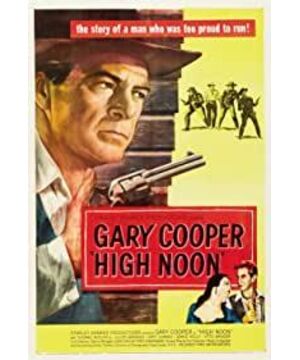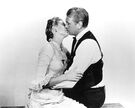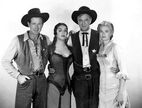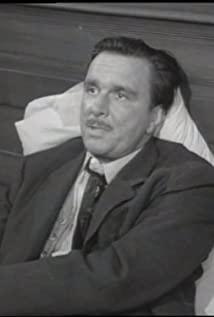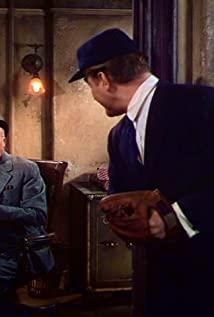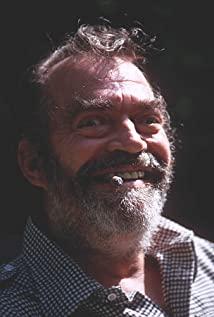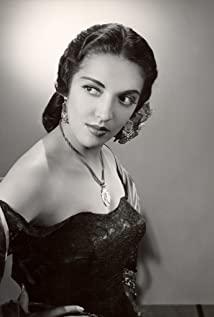From the beginning of the film, we can notice that the protagonist’s wedding was not held in the church, but it was married by the pastor. In the film, when Gary Cooper went to the church to recruit volunteer security personnel, the pastor in the church asked him who hardly came to the church. His explanation was that he married a Quaker wife.
What is Quaker? The Quaker, also known as the Religious Society of Friends, is a sect of Protestant Christianity. This faction was founded in the 17th century in England. The founder was George Fox. This man preached everywhere and was often imprisoned for this. During the trial, he asked the judge whether he "shivered when he heard the word of God", so he named it "Quaker" (Quaker ). Quaker opposes war and violence in any form, does not respect anyone or asks others to respect themselves, all are equal, can not take oaths, and oppose baptism and the sacrament. Advocating that everyone should be like brothers, advocating pacifism and religious freedom.
Because of the Quaker Club, which abolished the red tape and advocated keeping everything simpler, the wedding of Cooper and Kelly was not held in the church. The Sheriff Kane played by Cooper himself, although not introduced, can be judged based on his behavior. The character is actually set according to the Quaker model, but he is not a pure Quaker because he uses a gun to solve problems. Although Kelly's Amy is a pure Quaker, he strongly opposed Kane to stay and kill the four gangsters, but at the end of the film, he used a gun to solve a bad guy for his man. Due to long-term persecution by other sects, the Quakers have grown to only 600,000 people in the United States today. They are generally concentrated in Pennsylvania and Rhode Island on the east coast. The founder of Pennsylvania is the famous Quaker disciples. William. Noon takes place in New Mexico, and the two are really separated by thousands of miles. Quakers are very rare in the desolate New Mexico. The screenwriters are arranged in this way, obviously not to promote the doctrine of the Quakers, but to deliberately put this A religious background is very absurd.
As a result, a Quaker and a suspected Quaker appeared in New Mexico on a rare occasion, and they both violated the Quaker’s anti-violence doctrine. The screenwriter’s painstaking setup was nothing more than an attempt to break the religious spirit of traditional Western films. In the traditional westerns, represented by John Ford, which combined Catholic patriotism and Puritanism, the meaning of fighting mostly comes from a kind of exclusivity. The traditional western emphasizes a conflict between the alien and the self, for example, in the eyes of the Puritans. , Indians are partners of the devil, so wars between whites and Indians are common in traditional Western films. This is not seen at noon. Quaker will also list the Indians as fellow travellers who can have a common belief, so we can see the Indians standing leisurely at the entrance of the bar. And the white men in the small town were not only cowardly, but also many ill-conceived were like the gangsters. When the number one villain Miller got off the train, he was in a straight suit and did not look a bit fierce. This ambiguity between the other and the self caused the Sheriff Kane to feel that he was risking his life to fight for the residents of the town, but they were not worthy of being his own, even his best friend was hiding at home. Dare to see him, which made him throw the police badge. Therefore, we say that noon is a western film based on contradictions and paradoxes. Its significance lies in questioning and breaking the philosophical and logical model of traditional western films.
George Stevens's so-called anti-western films did not use a spirit of suspicion to fight against, but instead focused on the demise of the western myth. Fred Kinneman's "Noon" takes the doctrine of an obscure sect as a foothold with an absurd plot setting, and then destroys this foothold, making all religious colors dim, so as to do so. Showing its contempt for tradition, it seems that Quaker's spirit of disrespect for everything. This kind of contempt is something that all westerns don’t have. It’s also Fred Kinneman’s style. He learned the techniques of Western films from Ford, but he didn’t learn the Ford model, and used the techniques that Ford taught. The film questioned and challenged Ford. Ford did not accept his challenge. It was Howard Hawkes and John Wayne who accepted his challenge. They filmed Rio Bravo, a similar plot with different backgrounds. Rio Bravo’s gun battle is wonderful, but not as powerful as the inner strength of "Noon". "Noon" takes the doctrine of the Quakers as the starting point and focuses on depicting the contradictions and conflicts in human nature. The brilliance of veteran westerns such as Man, Sam Parkinfa, or Howard Hawks. Therefore, it is such an anti-western western film that ranks among the best in many western films. Of course, this is also related to King Niman's independent production method.
Western films have not been valued for a long time, largely because they too much exaggerate the stereotypes of love, hatred, and hatred, emphasizing dazzling fighting, but not paying attention to the sublimation of human nature and other superstructures. Ford did it, and King Niman did it. , So their works can become classics.
View more about High Noon reviews


